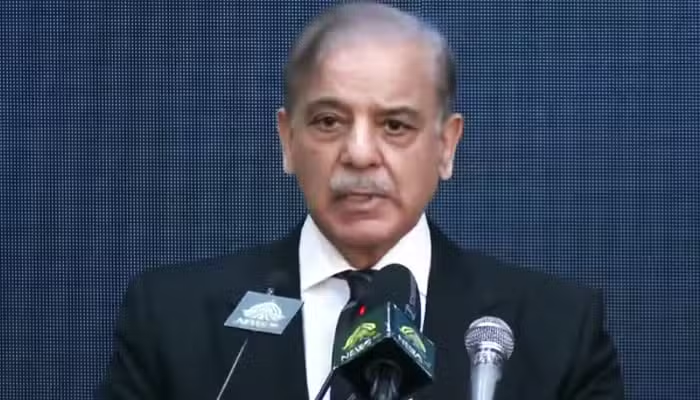In a significant move to provide relief to millions of consumers across the country, the Prime Minister has announced a substantial reduction in electricity prices, with the new tariffs set to take effect immediately. This landmark decision aims to alleviate the financial burden on households, businesses, and industries grappling with rising energy costs.
The latest report outlines the revised electricity rates for various consumer categories, ensuring transparency and clarity for all. In this detailed guide, we break down the new electricity tariffs, explain their impact, and offer insights into how you can benefit from these changes.
Rising electricity costs have long been a challenge for consumers, from low-income households to large-scale industries. The newly announced electricity prices reduction comes as a welcome relief, promising lower bills and increased affordability.
Whether you’re a domestic user, a commercial enterprise, or an agricultural worker, these revised rates are tailored to ease financial pressures and support economic growth. Let’s dive into the specifics of the new tariffs and see how they apply to you.
New Electricity Tariffs: A Detailed Breakdown
The revised tariffs cater to a wide range of consumer categories, each with its own pricing structure. Below, we’ve outlined the new rates for each group, making it easy to understand how these changes affect your electricity bills.
Lifeline Consumers
- Tariff: Rs4.78 per unit
- Who qualifies? Lifeline consumers are typically low-income households with minimal electricity usage. This affordable rate ensures that basic energy needs remain accessible to the most vulnerable.
Domestic Consumers
- Up to 100 units: Rs9.37 per unit
- Up to 200 units: Rs11.51 per unit
- Average Tariff: Rs31.63 per unit
- Who qualifies? Domestic consumers, the largest segment of electricity users, will enjoy significant savings, particularly those who keep their consumption within lower brackets. The average tariff reflects a blended rate across various usage levels.
Protected Consumers
- 100 units: Rs8.52 per unit
- Who qualifies? Protected consumers are households or individuals meeting specific government criteria, often including vulnerable or subsidized groups. This rate offers continued support for those who need it most.
Non-Protected Consumers
- 300 units: Rs34.03 per unit
- Who qualifies? Non-protected consumers with higher usage fall into this category. While the rate is higher, it still reflects the overall reduction in electricity prices.
Time of Use (TOU) Consumers
- Non-Protected TOU: Rs48.46 per unit
- Who qualifies? TOU consumers opt for time-based pricing, often benefiting from lower rates during off-peak hours. This category suits those with flexible consumption habits, such as households or businesses shifting usage to cheaper times.
Commercial Consumers
- Tariff: Rs62.47 per unit
- Who qualifies? Businesses, shops, and commercial establishments fall under this category. The reduced rate aims to lower operational costs and stimulate economic activity.
General Services
- Tariff: Rs49.48 per unit
- Who qualifies? This category covers public and community services like schools, hospitals, and government offices, ensuring essential institutions benefit from the price drop.
Industrial Consumers
- Tariff: Rs40.51 per unit
- Who qualifies? Factories and manufacturing units will see reduced energy costs, potentially boosting productivity and competitiveness in the industrial sector.
Agricultural Consumers
- Tariff: Rs34.58 per unit
- Who qualifies? Farmers and agricultural enterprises relying on electricity for irrigation and operations will enjoy lower rates, supporting rural economies and food production.
Azad Jammu and Kashmir (AJK)
- Tariff: Rs32.69 per unit
- Who qualifies? Residents and businesses in AJK will now pay this standardized rate, aligning with the national push for affordable electricity.
Public Lighting
- Tariff: Rs32.69 per unit
- Who qualifies? This rate applies to electricity used for streetlights and other public illumination, ensuring cost-effective urban infrastructure.
Average National Tariff
- Tariff: Rs37.64 per unit
- This figure serves as a benchmark, offering a snapshot of the overall pricing structure across all categories.
The reduction in electricity prices isn’t just a number on paper—it’s a tangible benefit for consumers across the board. Here’s how it impacts different groups:
- Households: Lower tariffs mean more disposable income for families, especially those in the lifeline, protected, and lower domestic consumption brackets.
- Businesses: Commercial and industrial users can reduce overhead costs, potentially leading to growth, hiring, or price reductions for goods and services.
- Agriculture: Affordable electricity supports farmers, enhancing food security and rural livelihoods.
- Sustainability: The tiered pricing encourages energy efficiency, rewarding those who conserve electricity with lower rates.
For example, a domestic consumer using 100 units per month will now pay Rs937 instead of a potentially higher previous rate, while a commercial user could see hundreds or thousands of rupees in monthly savings depending on usage.
The Prime Minister’s announcement of a reduction in electricity prices marks a turning point for consumers nationwide. With the new electricity tariffs now in effect, households, businesses, and industries alike can look forward to lower bills and greater financial flexibility.
From lifeline consumers paying just Rs4.78 per unit to industrial users benefiting from Rs40.51 per unit, these changes reflect a commitment to affordability and economic relief.
Take a moment to assess how these revised rates apply to you—whether it’s adjusting your usage or simply enjoying the savings. Stay informed about future energy updates, and share this guide with others who could benefit.
For more tips on managing your electricity costs or updates on government policies, keep visiting our site. Together, let’s make the most of these reduced electricity tariffs!


